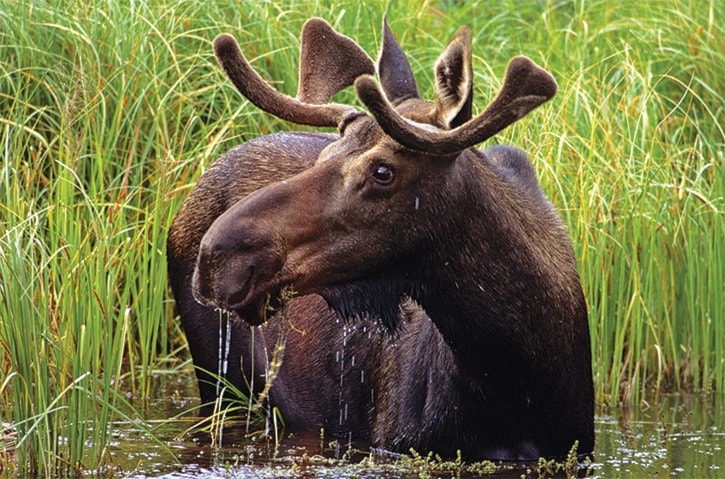In the story ‘Slow year for moose hunters in Burns Lake’ published in the Lakes District News’ Nov. 18 issue, conservation officer Robert (Ron) Leblanc said many hunters in the Burns Lake area were left disappointed after a weak moose hunting season this year.
“Several hunters I encountered mentioned this was the slowest year they’ve seen,” said LeBlanc.
In 2011/12, a survey of the Bulkley Valley Lakes District confirmed that the moose population had declined from 2004 by 20 per cent.
According to the provincial government, the decline in the moose population is not considered to be an immediate conservation concern.
“The [moose] population [in the Bulkley Valley Lakes District] is considered to be comparatively healthy, with good calf recruitment and bull to cow ratios above provincial objectives,” said Greig Bethel, Spokesperson for the Ministry of Forests, Lands and Natural Resource Operations.
“Based on this information, the [moose] population is not considered to be threatened and hunting regulations will remain in place until the area is surveyed again to allow for a re-assessment of the population,” he added.
Bethel said provincial biologists are monitoring the moose population in the Bulkley Valley Lakes District and plan to conduct the next population survey within two years.
During the winter of 2013/14, the ministry’s regional staff undertook 20 moose population surveys across the province. These results indicate that certain areas of the province are experiencing a decline in moose numbers including the Cariboo, central Omineca and North Thompson.
In a period of three years, the moose population in B.C. declined over 14 per cent. The 2014 estimate for B.C.’s moose population was from 120,000 to 205,000 with an average range of 162,500. In 2011, the estimate was from 145,000 to 235,000 with an average range of 190,000.
In order to investigate the reason for this decline, the province launched a five-year moose research study in 2013.
The study is engaging 11 wildlife biologists, one wildlife veterinarian and several other staff over its five-year duration. The province says over 200 moose will be radio collared, their movements tracked and all mortalities will be investigated to determine cause of death.
The study is analyzing factors such as hunting pressure, predators, parasites and diseases, and climate. It will also investigate how forestry-related changes to the landscape may impact those mortality risks.
Although the final results of the study will not be available for several years, the province says wildlife biologists will be able to use preliminary information to help direct management of moose throughout the province.
